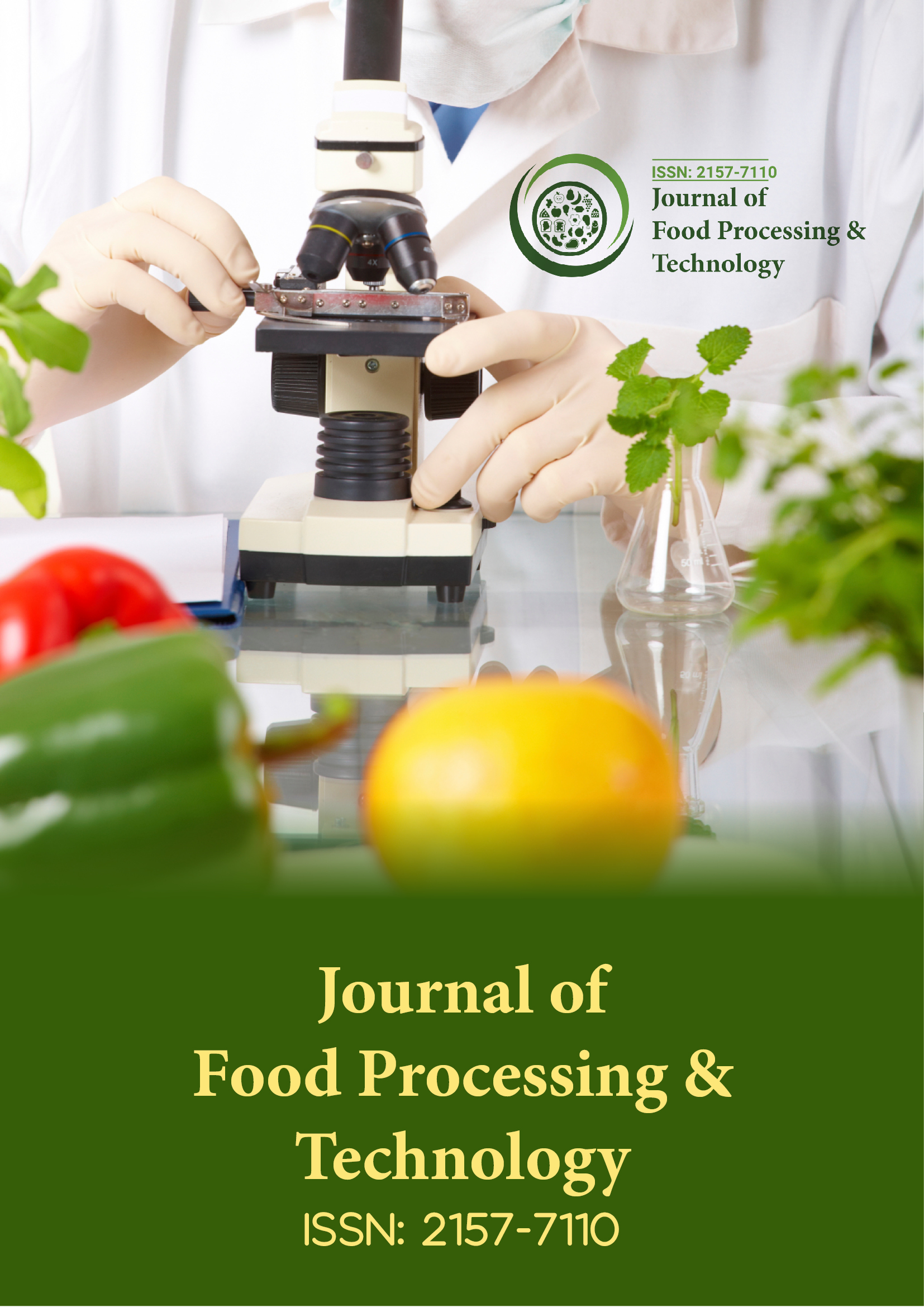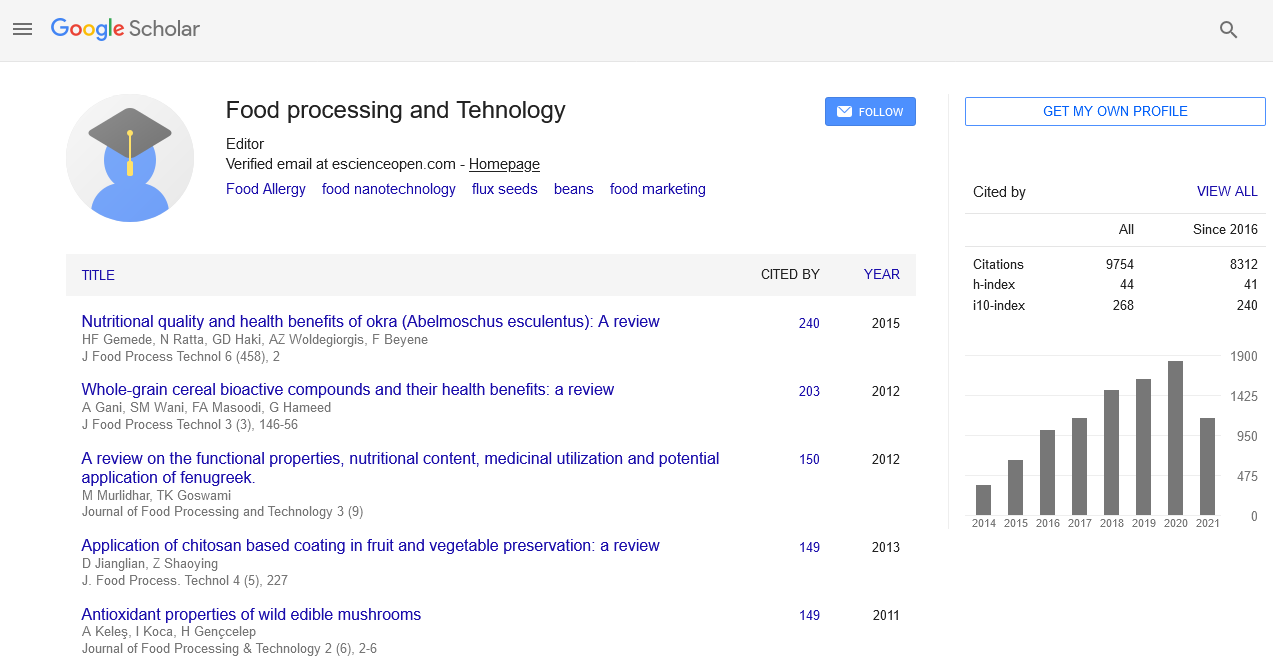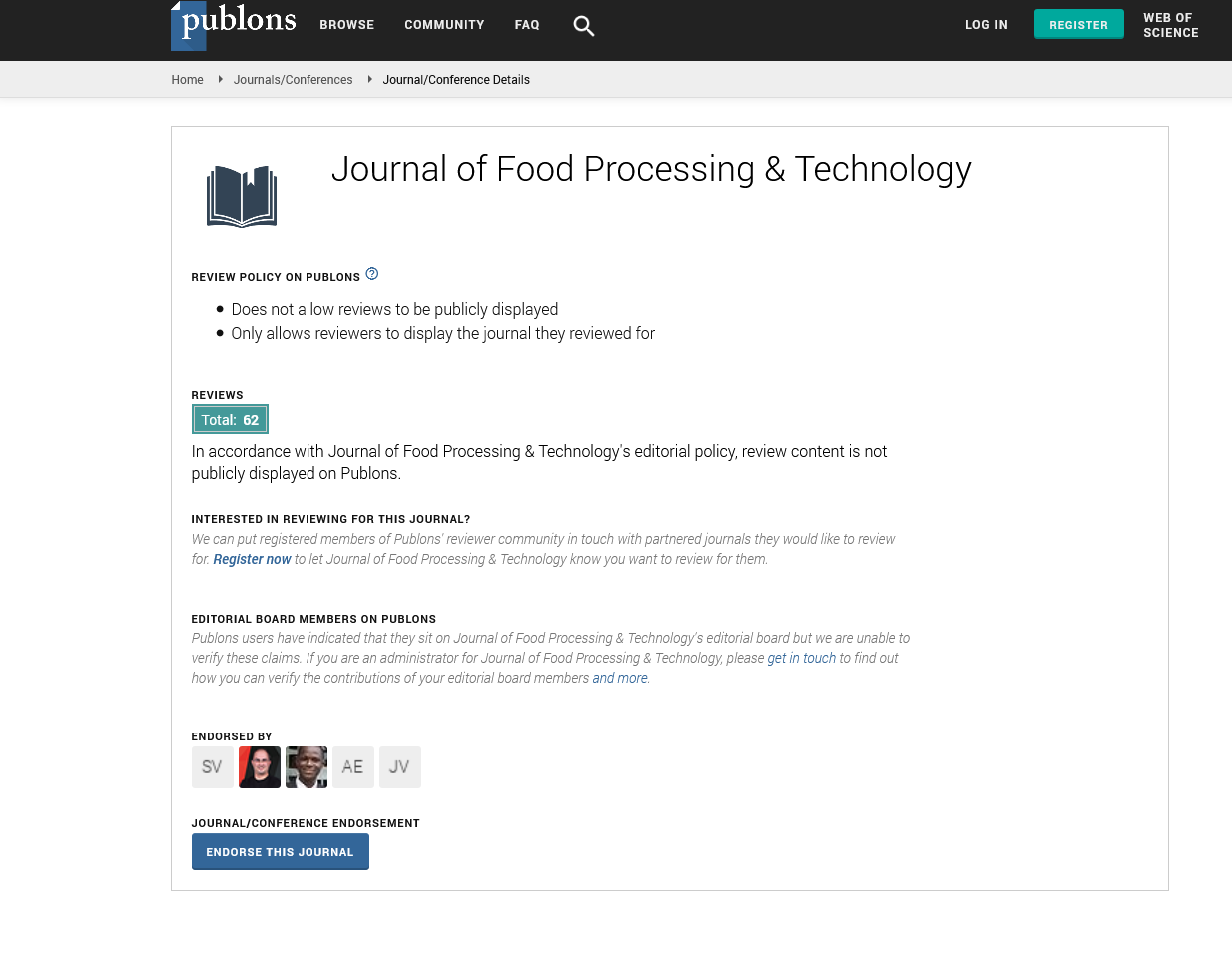Indexed In
- Genamics JournalSeek
- Academic Keys
- JournalTOCs
- China National Knowledge Infrastructure (CNKI)
- Access to Global Online Research in Agriculture (AGORA)
- Centre for Agriculture and Biosciences International (CABI)
- RefSeek
- Directory of Research Journal Indexing (DRJI)
- Hamdard University
- EBSCO A-Z
- OCLC- WorldCat
- Scholarsteer
- SWB online catalog
- Publons
- Euro Pub
- Google Scholar
Useful Links
Share This Page
Journal Flyer

Open Access Journals
- Agri and Aquaculture
- Biochemistry
- Bioinformatics & Systems Biology
- Business & Management
- Chemistry
- Clinical Sciences
- Engineering
- Food & Nutrition
- General Science
- Genetics & Molecular Biology
- Immunology & Microbiology
- Medical Sciences
- Neuroscience & Psychology
- Nursing & Health Care
- Pharmaceutical Sciences
Validating food insecurity scale for rural population: A step towards combatting food insecurity
Global Food Security and Sustainability Conference
September 05-07, 2016 Beijing, China
Neetu Sharma
National Law School of India University, India
Posters & Accepted Abstracts: J Food Process Technol
Abstract:
Food insecurity scales can help in identifying households that belong to high-risk groups. This effort helps in designing interventions and strategies based on pre-empting or combating malnutrition. Additionally, such a scale can also help us identify correlates of high-insecurity, i.e. poverty, education level, occupations etc., and enable interventions through the use of these correlates. In several countries, the measurement of food insecurity has led to new policies and policy adjustments that have subsequently led to introduction of targeted programmatic interventions aimed at promoting food security among the severely food insecure groups. As an outcome of the use of scale for measurements, some countries have effectively identified the vulnerable groups and have taken precautionary measures too to avert food insecurity situations. Using an eclectic tool developed from a combination of atleast five available scales, both traditional (i.e based on calorie consumption and income levels) as well as more dynamic ones (which also tried to capture perceptions and anxieties etc.), we approached 600 households in six different districts (administrative unit) in rural India to collect data. The survey included 18 questions about perception of food insecurity levels, and respondents were expected to choose a value between 0-never (felt the effects of food insecurity) and five (always feel the effects of food insecurity). Cumulative scores were used to categorise the household as food securre, moderately food insecure and severely food insecure. In the analysis of the data (N=600), we find varying degrees of food insecurity. For instance, we find data that suggests a negative relationship between perceived insecurity on the scale of one to five and monthly per capita income in line with expectations and theory. Additionally, we find occupational variation in perceived insecurity, with daily/casual labour facing a higher degree of insecurity than agricultural labour. Indicative relationships have also been traced between insecurity and outcomes such as BMI (BMI decreases as insecurity increases) and weight (weight decreases as insecurity increases).
Biography :
Email: shnitu@gmail.com


